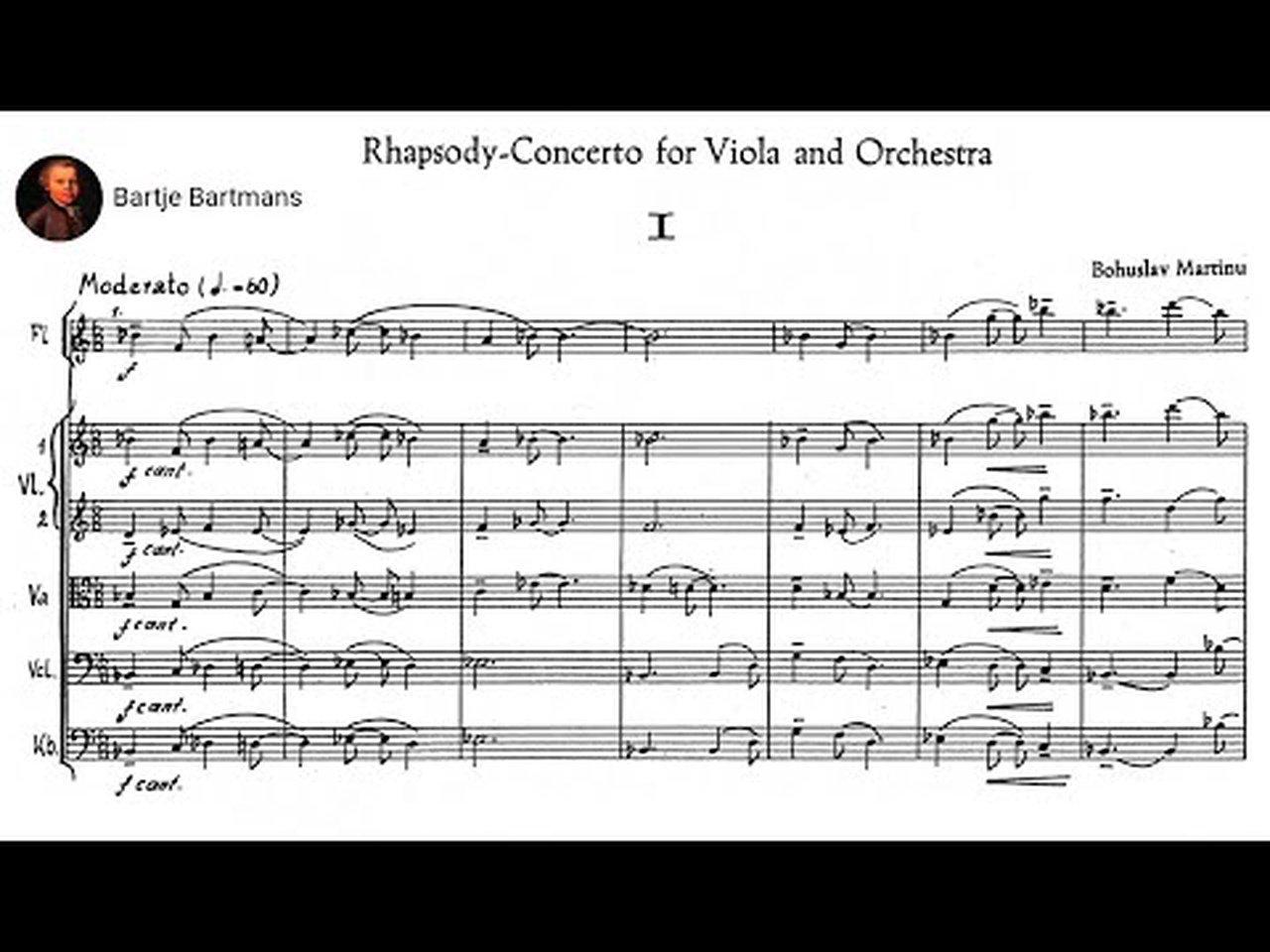Bohuslav Jan Martinů (December 8, 1890 – August 28, 1959) was a Czech composer of modern classical music. He wrote 6 symphonies, 15 operas, 14 ballet scores and a large body of orchestral, chamber, vocal and instrumental works. He became a violinist in the Czech Philharmonic Orchestra, and briefly studied under Czech composer and violinist Josef Suk. After leaving Czechoslovakia in 1923 for Paris, Martinů deliberately withdrew from the Romantic style in which he had been trained. During the 1920s he experimented with modern French stylistic developments, exemplified by his orchestral works Half-time and La Bagarre. He also adopted jazz idioms, for instance in his Kitchen Revue (Kuchyňská revue).
Please support my channel:
Rhapsody-Concerto for Viola and Orchestra, H. 337 (1952)
1. Moderato (0:00)
2. Molto Adagio - Poco allegro- Andante molto tranquillo (10:31)
Bohuslav Matoušek, viola and the Czech Philharmonic Orchestra conducted by Christopher Hogwood
Hyperion CDA67673
The Rhapsody-Concerto for viola and orchestra, H337, was commissioned by the Ukrainian-born American viola player Jascha Veissi (1898–1983) and written in New York City from 15 March to 18 April 1952. Thanks to extensive research by Paul Silverthorne, the biography of the more-or-less forgotten Veissi is fairly well established. He was born as Joseph Weissman in Ukraine, studied the violin at the Odessa Conservatoire and emigrated to the United States in 1920. From 1921 he was a member of the first violins of the Cleveland Symphony Orchestra, and was leader from 1927. He met Martinů in the late 1920s in Paris. In 1931 Veissi changed violin for viola and became principal viola of the San Francisco Symphony Orchestra and later a member of the famous Kolisch Quartet. He then had a busy schedule as soloist, chamber musician (later with the Coolidge Quartet) and teacher. In 1951 he commissioned Martinů to compose a concerto for viola.
In the Rhapsody-Concerto Martinů started his final major stylistical development towards neo-Romanticism (he himself described it as a turn from ‘geometry’ to ‘fantasy’). His ability to build up extensive lyrical passages ending in strong catharsis here reaches here its first peak. The work has just two movements. The first, Moderato, opens in B flat major, Martinů’s favoured key in his late works. With the switch of the two central notes the four-note motif Bb–A–Cb–Bb alludes to the main theme of the Kyrie in Antonín Dvořák’s Requiem. After a large orchestral introduction the viola enters with a lyrical cantabile melody. Although Martinů offers the soloist opportunities for virtuoso display, the main character of the work is lyrical and calm. Extensive use is made of the ‘Juliette chord’, with all its resonances described in connection with the Elegy from the first Suite concertante. The second movement, Molto adagio, opens in a tonality oscillating between E flat major and E flat minor. After a fast second motif (Poco allegro) Martinů introduces a simple but strong melody in F major, marked molto tranquillo. After a fast middle part Martinů returns to this melody once again in a moving coda. The final beats of the snare drum evoke an early reminiscence of the composer, who as a small child—so he recounted to Šafránek around the time he composed the Rhapsody-Concerto—used to walk around the gallery of the church tower in Polička, where he was born, playing a small drum.
The premiere of the Rhapsody-Concerto took place on 19 February 1953 with Jascha Veissi accompanied by the Cleveland Orchestra and George Szell. During the three years of Veissi’s exclusivity with this concerto he played it in several places, the European premiere probably being in the same year in Geneva with the Orchestre de la Suisse Romande. The performance on 2 July 1954 in Santa Barbara at the Pacific Coast Festival, with members of the San Francisco Symphony Orchestra conducted by Walter Hendl, was reported by Veissi to have been recorded, but unfortunately the tape is missing. After Veissi’s period of exclusivity expired Martinů’s Rhapsody-Concerto became one of the most performed viola concertos of the twentieth century.
from notes by Aleš Březina © 2008



Leave a Comment